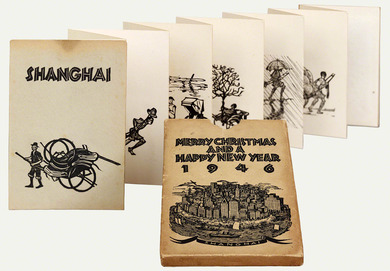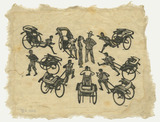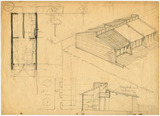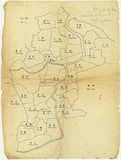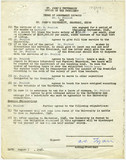Shanghai
Zuerst muß ich Ihnen aber wirklich sagen, wer ich bin. Ich bin Refugee, Kunsthistoriker und Schriftsteller und lebe gegenwärtig in Shanghai, China. Sie werden sagen, so etwas muß ungemein interessant sein, aber ich versichere Ihnen, es ist ungemein schwer.
[But first I have to tell you who I really am. I am a refugee, art historian and writer and I am currently living in Shanghai, China. You will say that this must be really interesting but I assure you it is extremely difficult. (ed. trans.)]
Lothar Brieger in Die Gelbe Post , July 1939
For many who only left Germany in 1938, after the November Pogroms, Shanghai became the last refuge. While more and more international borders were being closed, people could still enter parts of the city without a visa until 1941. The city state ruled by the “International Council”, an international magistrate, was open to anyone, including many German Jews who had become stateless after Hitler’s passing of the expatriation laws in 1939. An estimated 18,000 people went to Shanghai.
Once they arrived in the harbour city, many of the mainly destitute migrants were confronted by difficult living conditions. For the Europeans it was hard to get used to the tropical climate with its long rainy periods, crowded living conditions and volatile labour market. The establishment of the ghetto for Jewish refugees by the Japanese military authority in February 1943 made life even harder for the emigrants. Life in the ghetto was characterised by poverty and the small range of movement within the confines of the ghetto as well as monitoring by the Japanese military authority.
Despite the many uncertainties, the emigrant community developed a varied cultural life. Even though hardly any well-known artists emigrated to Shanghai, almost 200 artists were engaged in artistic activities in the city. However, they only did so in their free time and to the extent their financial circumstances allowed them to do so. In the hall of the Eastern Theatre cinema, King Oedipus was staged in 1939 and Nathan the Wise in 1940. Musicians were hired by the Shanghai City Orchestra. Sophisticated texts were published in the Gelbe Post newspaper and the Shanghai Jewish Chronicle.
Further reading:
Barzel, Amnon: Leben im Wartesaal. Exil in Shanghai. 1938-1947. Berlin: Jüdisches Museum im Stadtmueseum Berlin 1997
Dreifuß, Alfred: Schanghai – Eine Emigration am Rande. In: Midell, Eike / Dreifuss, Alfred (Hg.): Exil in den USA. Leipzig: Reclam Verlag 1979
Mühlberger, Sonja: Geboren in Shanghai als Kind von Emigranten. Leben und Überleben (1939-1947) im Ghetto von Honkew. Berlin: Hentrich & Hentrich 2006

